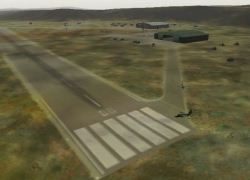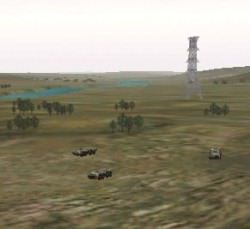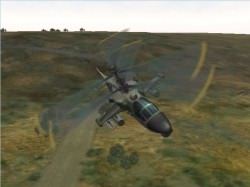| Team Alligator Interview
by Leonard "Viking1" Hjalmarson |
||||
|
Q: Thanks for taking the time to connect with us. Team Apache was a great game and appealed to a broad cross section of sim fans. The greatest appeal was perhaps the graphics engine itself. Where will Team Alligator move beyond the earlier engine? What will we see that will tell us this is a new standard? A: Thanks for the complements, though like any group of creatives we are probably our own harshest critics when it comes to previous products like Apache. In Team Alligator we've moved from our old Icarus graphics engine to our new Daedalus engine, which has opened up a whole new realm of graphics capability for us and allows us to do things no helicopter sim has done before. The problem we had with the old engine was one common to most helicopter sims: that of adapting an engine originally designed for jet sims to a helicopter game. One of the biggest flaws was that the terrain resolution was simply too coarse. What works well for a jet sim, flying at ten kilometres a minute does not work for helicopter flying one kilometre in the same time.
 The terrain resolution, the environment, is crucial in a helicopter game. Helo players look for subtle wrinkles in the terrain to hide behind; they look for trees and buildings to use as cover. They are flying at less than treetop height, so you need to build a whole convincing world at ground level for them to fight in. In a helicopter sim you need a world about as detailed as that of a tank sim. But you also need it to cover a much larger area to allow for the helicopter's greater speed and range. That's a demanding set of parameters. You want a large world, but you want it detailed. And that's what our new Daedalus engine delivers. It allows us to put a lot of polygons on the screen at any one time. In turn this has permitted us to create a detailed terrain system with very fine ground resolution, and let us populate the world with convincing trees, buildings, telegraph poles, you name it. Special effects too. We now have the tools to create an authentic working environment for helicopters to fly and fight in. |
 Q: Tell us about environmental bump mapping? How is it employed and what does it accomplish? A: Environmental bump mapping is currently only supported by the Matrox G400, and is an incredibly clever way of achieving greater detail in game graphics without using extra polygons. There are a variety of different bump mapping solutions Team Alligator will be using, and environmental bump mapping is only one of them. Bump-mapping works by moving parts of a texture (a texel, which is one pixel in a texture) around in relation to lights. This simulates bumps with respect to lighting. Emboss bump-mapping draws the polygon twice, once with the texture as normal and a second time it 'subtracts' the bump-map from the original, which darkens the texture in 'bumpy' areas- to simulate shadow. In addition, on this second 'pass' the bump-map texture is shifted a few texels in relation to the direction of a light, which means the shadowy areas can move as the light moves.
 Pre Bump Mapped Ka52 Environmental bump-mapping is performed by applying a texture on which the light is drawn (e.g. a white specular highlight) to the normal texture. This means the shiny highlights only brighten the bumpy areas of texels facing the light source. This is used to simulate ripples on water, heat hazes, etc. Go to Page Three
|
|||
|
Copyright © 1997 - 2000 COMBATSIM.COM, INC. All Rights Reserved. Last Updated June 7th, 1999 |
||||
